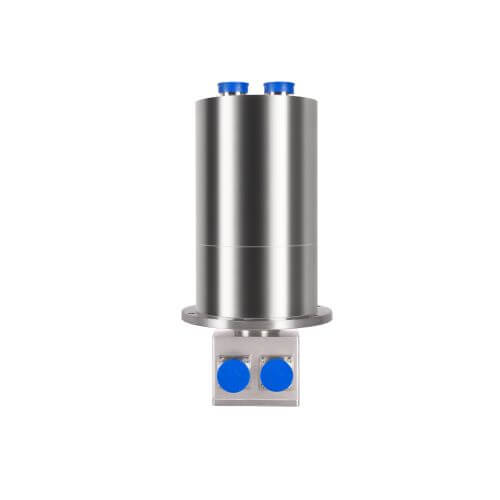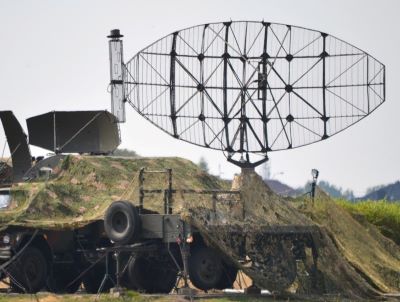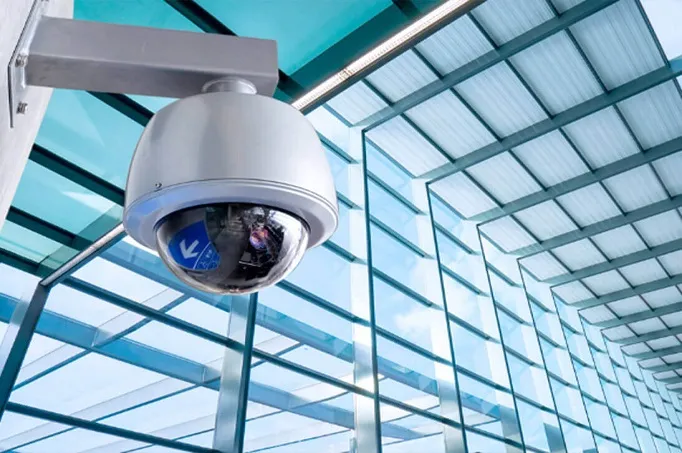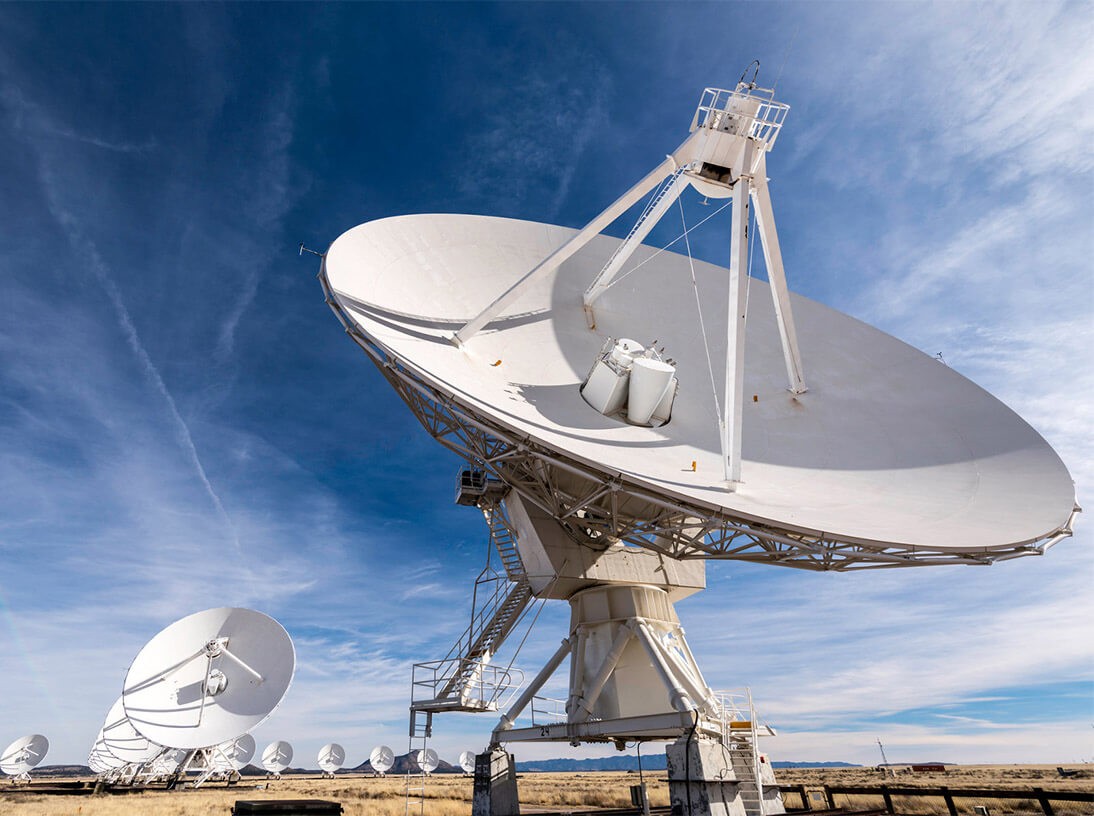The phenomenon of “ring on radar” has piqued curiosity and posed challenges for professionals across various sectors including aviation, maritime, weather forecasting, and the military. This article delves into the enigmatic world of radar technology, shedding light on what these rings signify, the principles behind radar operation, and the common causes of such echoes. From technical anomalies to natural occurrences, readers will gain a comprehensive understanding of how to decipher these signals, emphasizing the practical applications and implications in real-world scenarios. Through an exploration of cutting-edge advancements in radar technology, the article also highlights efforts to minimize false alarms and boost interpretative accuracy, promising a future where radar data becomes even more reliable.
Introduction: The Enigma of “Ring on Radar”
Radar technology stands as a pivotal innovation in our modern world, penetrating the veils of invisibility that distance, weather, and night impose. At its core, radar (RAdio Detection And Ranging) systems emit radio waves to detect objects’ positions, movements, and characteristics, illuminating the unseen. Its inception during World War II heralded a new era in military strategy, but its application has since burgeoned, embedding itself in the fabric of various vital sectors.

In the aviation industry, radar plays an indispensable role in air traffic control, ensuring the safe and orderly flow of planes both in the sky and on the ground. It acts as the eyes of the system, monitoring aircraft positions to prevent collisions and guide pilots through treacherous weather. Likewise, in the maritime sector, radar Systems scan the vast, open seas, aiding in navigation, identifying hazards, and ensuring the safety of ships against collisions and grounding.

Moreover, weather forecasting relies on radar technology to peer into the heart of storms. Meteorologists use it to track precipitation, forecast severe weather events, and provide early warnings that save lives and property. Similarly, the military depends on radar for surveillance, target acquisition, and defense against threats, making it an indispensable tool in maintaining national security.

Amidst the myriad applications and benefits of radar technology lies a less understood and visually striking phenomenon known as the “ring on radar.” Occasionally, radar operators and meteorologists observe curious circular patterns on their screens – rings that seem to emerge from nowhere and mystify even seasoned experts. These phenomena can range from small, localized circles to vast expanses covering hundreds of miles.
The “ring on radar” phenomenon raises questions and sparks curiosity. Is it an artifact of the radar system, a unique atmospheric condition, or something entirely different? Understanding these enigmatic rings is not just a matter of academic interest; it holds practical implications. For instance, accurately interpreting these rings can mean the difference between predicting a sudden weather event and being caught off-guard, or distinguishing between normal environmental echoes and potential security threats.
This introduction to “ring on radar” seeks to demystify this phenomenon, explore its causes, and delve into its significance across different sectors where radar technology plays a critical role. Through real-world examples and case studies, we will uncover the mysteries of the rings, addressing common questions and misconceptions along the way. Join us on this journey into the heart of radar technology, where every echo tells a story and even the most perplexing signals can unlock secrets of both the natural and man-made world.
Understanding “Ring on Radar” – A Technical Overview
Imagine you’re gazing through a fog-covered landscape, and you have a device that allows you to detect objects hidden by the mist merely by tossing pebbles and listening to the echoes. This is roughly how radar technology operates, but instead of pebbles, it uses radio waves, which travel at the speed of light and bounce back upon encountering an object, signaling its presence and location.
In this technological dance of emission and reflection, a “ring on radar,” then, appears as a mysterious circular echo, undulating across the radar screen like ripples in a pond. To the untrained eye, they might resemble the ghostly imprints of a giant creature lurking just beneath the surface of the footprint of an invisible atmospheric titan. Yet, these rings are not mere artifacts of the imagination but rather peculiar patterns that radar technicians and weather experts occasionally encounter on their screens.
To comprehend the skeleton of radar operation, one must grasp its reliance on radio waves. These invisible waves are sent out in pulses by a rotating antenna, sweeping the sky like a lighthouse beam. When they make contact with an object—a plane, a storm cloud, a flock of birds—the waves are reflected back to the radar station. The time it takes for the echo to return clues to the radar system on the object’s distance, while the change in frequency—or the Doppler effect—can reveal its velocity and direction.
So, how do these continuous echoes translate into the concentric circles known as “ring on radar”? There are multiple explanations, each rooted in the interplay between the emitted radio waves and the environment they traverse. Occasionally, these rings are the fingerprints of genuine meteorological or environmental phenomena; other times, they represent false echoes or ‘anomalies’ emerging from the radar system’s own intricacies or the unique atmospheric conditions that can bend or reflect the radio waves erratically.
One might think of the atmosphere as a colossal ocean of air—temperatures and humidity change with altitude, just as water temperature and salinity can vary with depth. These variations can create layers where radio waves refract or scatter differently, potentially casting back those puzzling rings. Add to this the potential for interference—other signals or electronic devices muddying the waters—and the plot thickens.
In the following sections, we will dissect some of these influences, scrutinizing real-world examples where “ring on radar” features prominently. From tales of military exercises inadvertently painting cryptic circles on weather radars to migrations of birds creating halos on air traffic control screens, these case studies will illuminate the spectrum of causes behind these captivating radar signatures.
By breaking down complex radar interactions into digestible insights, addressing misconceptions step by step, and offering actionable knowledge, this chapter will not only quench the reader’s curiosity but also equip them with the capacity to decipher the language of the skies—an invaluable skill in an age where technology and nature are increasingly intertwined.
Common Causes of “Ring on Radar”
In the complex world of radar technology, the appearance of “ring on radar” phenomena has puzzled and fascinated those who witness it. These curious circular patterns have a range of sources, each interweaving the invisible threads of technology with the tapestry of the natural and man-made environment. In this chapter, we will explore the multifaceted origins of these rings, from meteorological marvels and aerial animal migrations to the intrinsic quirks of the radar systems themselves.
Weather Phenomena: The Atmospheric Artists
One of the prominent artisans behind the creation of “ring on radar” is the atmosphere itself, engaging in a performance where conditions must align perfectly. A phenomenon known as Bragg scattering is a leading act in this atmospheric theater. Here, radar waves encounter uniform small particles—such as those present in certain cloud formations or mist—causing the waves to scatter and create a symmetrical pattern on the radar screen. Imagine tossing a handful of pebbles into a still pond and watching the ripples form a series of concentric circles; similarly, Bragg scattering creates a radar echo that radiates outward in rings.
Example: Visualize a radar screen during a calm, misty dawn, suddenly alight with concentric circles emanating from a central point. This might well be the signature of Bragg scattering, captured visually as a serene, yet scientifically significant, event.
Fauna in Flight: Birds and Insects as Radar Artists
Moving from the atmospheric to the biological, large flocks of birds and swarms of insects can also be the culprits behind “ring on radar.” As these creatures take to the skies in massive numbers, they reflect radar waves back to the receiver, painting dazzling patterns that can be mistaken for cloud formations or even aircraft.
Example: A case study here could involve the annual migration of birds. Picture tens of thousands of starlings, their bodies acting as reflectors for radar signals, creating an expansive ring visible to amazed meteorologists and ornithologists alike. Coupling the radar data with real-time visuals can illustrate the magnificent scale of these migrations and their radar signatures.
The Machinery Behind the Mystery: Radar System Quirks
Sometimes, the artisan crafting the “ring on radar” is the radar system itself. Technical reasons, including side lobe reflections (where radar waves bounce off objects outside the main focus area), interference from other electronic devices, or even the radar’s design, can create these enigmatic rings.
Example: An insightful illustration of this can be observed in urban areas, where buildings and infrastructure can reflect radar signals in unexpected ways. A radar system positioned near a large, metallic structure might display a ring when the conditions are right (or wrong), stemming from the radar’s own beams bouncing off the structure and returning as an anomalous echo.
In delving into these causes, we bridge the gap between mystery and understanding. The “ring on radar” phenomenon, once an arcane puzzle, becomes a narrative of interaction between human-made technology and the natural world. Through visuals that accompany each explanation—whether imagery of bird migrations captured alongside radar screens or diagrams illustrating the physics of Bragg scattering—readers can more deeply connect with the inner workings of radar technology.
This journey into the sources of “ring on radar” not only enlightens but also empowers. With a clearer grasp of these phenomena, enthusiasts, professionals, and the casually curious can look beyond the surface of radar screens, appreciating the intricate dance of signals, nature, and technology that unfolds within.
Deciphering “Ring on Radar” – Identifying and Understanding Signals
Interpreting the enigmatic “ring on radar” extends beyond mere observation; it requires an astute understanding of the myriad contexts in which these phenomena occur. This chapter navigates through the intricate process of identifying what these radar rings might signify, from heralding severe weather conditions to marking substantial biological movements. Moreover, we underscore the importance of seasoned intuition and supplementary tools in cracking the code of these mysterious signals.
Weather Prediction: Foreseeing the Storm
In the realm of meteorology, a “ring on radar” can be a harbinger of impending atmospheric disturbances. Identifying potential weather threats early on can dramatically impact preparation and response efforts, potentially saving lives and minimizing damage.
Storm Formation: Consider a scenario where a weather radar detects a sudden appearance of concentric circles emanating from a central location. To the trained eye, this pattern might suggest the early stages of storm formation, particularly if the rings are expanding rapidly. Distinguishing between benign rings caused by atmospheric quirks and those signaling storm development is crucial. For instance, a closer analysis may reveal tightening spirals—a sign of intensifying winds and possible tornado formation.
Case Study: A real-world application of this knowledge occurred during the legendary Super Outbreak of tornadoes. Meteorologists, noticing peculiar ring patterns on radar screens, accurately predicted the development of multiple high-intensity tornadoes, enabling timely warnings.
Tracking Biological Phenomena: Wings on the Wind
Beyond the clouds, “ring on radar” also captures the grand ballet of avian and insect migrations. For biologists and conservationists, interpreting these signals offers insights into the movements of species across landscapes, essential for tracking biodiversity and ecological health.
Birds and Insects: A sudden appearance of a radar ring in an otherwise clear sky might not suggest weather changes but the mass movement of birds or insects. Distinguishing these biologically induced rings from weather phenomena involves analyzing the shape, consistency, and timing of the rings—birds tend to create more structured patterns compared to the more chaotic signatures of weather disturbances.
Case Study: An illustrative example here is the radar tracking of the monarch butterfly migration. Scientists identified peculiar ring patterns moving across radar screens, which, upon investigation, correlated with the mass movement of millions of monarch butterflies—a discovery that offered profound insights into migration paths and timings.
The Role of Experience and Tools
Mastering the art of radar signal interpretation is not solely dependent on technological prowess; it equally values the cultivator of this knowledge—the observer. Experience plays an irreplaceable role in distinguishing between the myriad sources of “ring on radar.” Veteran radar operators and meteorologists often rely on nuanced patterns and historical data to inform their interpretations.
Complementing this seasoned intuition are advanced tools and techniques that enhance the radar’s base capabilities. Dual-polarization radar technology, for instance, allows for a more detailed analysis of precipitation, distinguishing between rain, hail, and even biological targets like birds or insects. Similarly, integrating radar data with other observational tools—such as satellite imagery and ground-based sensors—enriches the context, enabling a more accurate understanding of the phenomena behind the mysterious rings.
Deciphering the “ring on radar” phenomena encapsulates the interplay between art and science—a dance of interpreting patterns woven by nature and technology. Through real-world examples and a deep dive into the processes behind identification and understanding, we’ve explored how these rings are not merely anomalies but significant signals that, when correctly interpreted, unveil the hidden stories of our atmosphere and the life it sustains. As we advance, the synergetic use of experience, technology, and interdisciplinary collaboration remains key in unraveling the deeper meanings behind each ring, marking progress in our continuous quest to comprehend the world around us.
Ring on Radar in Action – Real-World Applications and Case Studies
Interlacing the theoretical with the tangible, Chapter 4 unfolds the multifaceted role of “ring on radar” in diverse fields, including meteorology and aviation. Rooted in real-world situations and case studies, this chapter underscores the critical importance of accurately interpreting radar signals and the profound implications these readings hold in safeguarding assets and lives. By navigating through examples where “ring on radar” played a pivotal role, we illuminate the practical implications that extend well beyond the radar screen.
Rings and Rains: The Meteorological Perspective
Radar technology has revolutionized the field of meteorology, providing unparalleled insights into atmospheric conditions. The ability to decipher the cryptic “ring on radar” has been instrumental in predicting, tracking, and responding to severe weather events.
Case Study – The Super Outbreak of 2011: One of the most catastrophic tornado outbreaks in U.S. history, the Super Outbreak of April 2011 laid bare the power and utility of radar technology. As concentric rings began appearing on radar screens across several weather stations, trained meteorologists recognized the ominous signs of an approaching weather disaster. The timely interpretation of these “ring on radar” patterns, indicating severe tornado formation, enabled meteorologists to issue warnings hours in advance, arguably saving countless lives amid the catastrophic event.
Rings and Routes: The Aviation Perspective
In the aviation industry, radar systems are indispensable tools that guide thousands of flights safely to their destinations, even amid the most challenging weather conditions. The interpretation of “ring on radar” in this context serves as invaluable guidance in adjusting flight paths and altitude to ensure passenger safety and maintain efficient operations.
Case Study – Navigating Through the ‘Storm of the Century’: On March 12th, 1993, the eastern part of the United States witnessed a deadly blizzard dubbed the ‘Storm of the Century.’ Despite the extreme meteorological conditions, thousands of flights navigated the region’s airspace safely over the course of this storm. Deciphering the “ring on radar”—the echoes of the colossal storm on radar screens—proved integral to averting disaster. Aviation meteorologists worked tirelessly to interpret these radar patterns, providing crucial real-time feedback to pilots and air traffic controllers to reroute planes or adjust altitudes to circumnavigate the intense weather.
Conclusion
Through the kaleidoscope of meteorology and aviation, we’ve journeyed through situations where the interpretation of “ring on radar” was instrumental in averting disaster, mitigating losses, and ensuring safety. These narratives underscore the crucial role radar technology plays in our daily lives, from predicting the whims of the weather to guiding us safely across the skies. As we navigate the ever-evolving tapestry of radar technology, these case studies serve as stark reminders of the potent blend of human expertise and advanced technology that allows us to harness the power of radar, transforming echoes into life-saving decisions.
Future of Radar Technology – Minimizing False Alarms and Enhancing Accuracy
In the evolving narrative of radar technology, the pursuit of precision and reliability forms the core storyline. Chapter 5 delves into the future, where advancements in radar equipment and interpretation herald a new era of certainty and clarity. Here, we chart the course of innovation aimed at mitigating the perplexities of “ring on radar” phenomena and elevating the accuracy of these indispensable systems. Through the lens of emerging research and development, particularly in artificial intelligence (AI) and machine learning (ML), we explore how future radar systems are poised to not only distinguish truth from misleading echoes but also redefine our understanding of atmospheric phenomena.
Cutting-edge Innovations in Radar Technology
The push towards minimizing false alarms and enhancing the fidelity of radar signals has catalyzed the development of sophisticated technologies. These innovations are set to redefine how we interact with and interpret radar data.
Phased Array Radar: A pivotal advancement is the phased array radar system, which offers dynamic beam steering capabilities. Unlike traditional radar systems that rotate to scan the sky, phased arrays can direct their beams rapidly in any direction, allowing for real-time tracking of weather events and enhancing the detection accuracy of transient phenomena. This agility reduces the time lag in data acquisition, crucial for timely decision-making in severe weather situations.
Dual-Polarization Radar Technology: By transmitting and receiving pulses in both horizontal and vertical orientations, dual-polarization radar provides a more comprehensive view of targets. This technology can discriminate between different types of precipitation, biological entities (such as birds and insects), and other non-meteorological objects, thereby reducing false alarms related to “ring on radar” phenomena.
Leveraging AI and Machine Learning
The frontier of radar technology increasingly intersects with the realms of AI and ML, opening up new vistas for data interpretation and decision-making processes. These computational methodologies empower radar systems with the capacity to learn from past events, improve pattern recognition, and make predictive analyses with astonishing accuracy.
Pattern Recognition and Anomaly Detection: Machine learning models are being trained to differentiate between normal and anomalous radar signatures. By digesting vast datasets of radar imagery—tagged with expert interpretations—these models can identify nuances in “ring on radar” phenomena that the human eye might miss, distinguishing between false alarms and genuine meteorological or biological events.
Predictive Analysis and Decision Support: AI algorithms can assimilate real-time radar data with historical patterns and contextual information to forecast future developments. This predictive capability is invaluable for early warning systems, where anticipating the evolution of weather phenomena or migratory patterns can prevent loss of life and mitigate economic impacts.
Case Studies and Real-world Applications
To illustrate the tangible benefits of these technological advancements, consider a scenario where an AI-enhanced radar system identifies an anomalous “ring on radar.” Instead of triggering an immediate alert, the system cross-references this pattern against its trained database and concludes the signature matches that of a large migratory bird flock, thus avoiding a false weather alarm.
Additionally, during a severe weather event, the combination of phased array and dual-polarization technologies, supplemented by AI analysis, can discriminate between hazardous conditions and benign anomalies with unprecedented precision, directing emergency responses more effectively.
As we stand on the precipice of a new era in radar technology, the fusion of advanced hardware, AI, and ML holds the promise of transforming the landscape of meteorological prediction and environmental observation. By minimizing false alarms and enhancing the accuracy of interpretations, the future of radar technology not only secures our safety but also deepens our connection to the natural world. This journey towards innovation, grounded in the pursuit of knowledge and safeguarding communities, exemplifies the relentless human endeavor to harmonize technological advancement with our environmental stewardship responsibilities.
FAQs about Ring on Radar
In the ever-expanding universe of radar technology, “ring on radar” phenomena spark a plethora of questions among professionals and enthusiasts alike. Chapter 6 serves as a beacon, illuminating the enigmatic world of radar imagery through a compilation of FAQs. Each response is crafted to distill complex concepts into digestible insights, offering a clear and concise understanding of the nuances involved in radar interpretation.
Q: What is a “Ring on Radar”?
A: A “ring on radar” refers to the appearance of circular or annular echoes on radar imagery, often indicative of precipitation or other atmospheric phenomena. However, not all rings represent weather conditions; some could be attributed to technical anomalies or non-meteorological factors like birds, insects, or aircraft.
Q: How Reliable are Radar Images When It Comes to Safety?
A: Radar images are a critical tool for ensuring safety in both meteorology and aviation. Modern radar systems undergo continuous improvements and rigorous testing to ensure reliability. Interpretation by trained professionals further enhances the safety utility of radar data.
Q: Can “Ring on Radar” Indicate False Alarms?
A: Yes, rings on radar can result in false alarms. Anomalous propagation, for instance, can cause radar beams to reflect off stable layers of air or objects on the ground, creating misleading precipitation signals. Advanced radar systems and expert interpretation strive to minimize these occurrences.
Q: How Can I Learn to Interpret Radar Data?
A: Learning radar interpretation typically involves a combination of education in meteorology or aviation, hands-on training, and experience. Many online courses and resources from reputable meteorological and aviation institutions can lay the foundation for understanding radar data.
Q: Are There Different Types of “Ring on Radar”?
A: Indeed, radar rings can vary based on their cause. Some common types include:
- Anomalous Propagation (AP): false signals due to atmospheric conditions affecting the radar beam.
- Biological Scatter: rings caused by flocks of birds or insects in flight.
- Chaff Rings: patterns resulting from the release of radar countermeasure materials by military aircraft.
- Ground Clutter: caused by radar waves hitting buildings, towers, or mountains close to the radar site.
Q: What Actions Should be Taken If a “Ring on Radar” is Detected?
A: The procedures following the detection of a “ring on radar” depend on the context, such as the type of radar system and the professional interpreting the data. Meteorologists may issue weather advisories, while air traffic controllers might alter flight paths. Professional judgment is key.
Q: How are False Alarms from “Ring on Radar” Minimized?
A: Technological advancements, such as dual-polarization radar and AI-driven predictive models, alongside the expertise of radar operators, are critical in distinguishing true meteorological events from false alarms. Continuous training and system updates also play an essential role.


